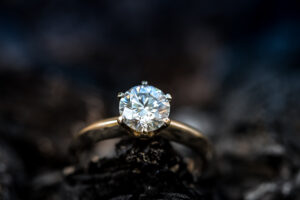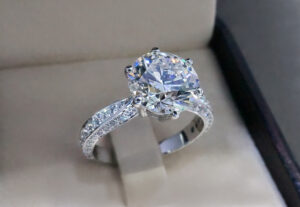
White gold is one of the elegant and cost-effective precious metals used in engagement rings. It can be a great choice for people who cannot afford platinum, as it can offer the look of the latter at much more affordable rates. The white shine of this metal makes it a wonderful option for diamond rings as it can enhance the brilliance of your natural and lab grown diamonds. Hence, if you are looking for a cost-effective metal that can offer a “cool” look to your engagement ring, then white gold is one of the best options you can consider.
But when getting white gold for engagement rings, you have to be aware of the benefits and drawbacks of this metal. Therefore, we list some of the important things you have to know about this metal so that you can make an informed decision when getting white gold for engagement rings:
What Is White Gold?
Gold is naturally yellow in color. But pure gold is very soft, hence, it cannot be used in jewelry, as it can easily get scratched or bent. Therefore, some alloys are added to pure gold to enhance its strength so that it can become more durable.
White gold comes with some additional alloys that are responsible for converting the color from yellow to white. Some alloys that add a white color to this metal include zinc, silver, palladium, platinum, or nickel. Your white gold jewelry also comes with a rhodium coating that offers the elegant white luster associated with this metal.
Based on the proportions of pure gold and other alloys, the quality of yellow gold can vary. White gold jewelry is usually available in 18k or 14k based on the amount of gold present in them.
18k White Gold
18k white gold comes with 75% pure gold and 25% other alloy metals. As it has more amount of pure gold than the 14k version, it is more valuable and costly. It is also more hypoallergenic than 14k gold because of the low amounts of alloys present in them.
14k White Gold

14k white gold has 52% pure gold and 48% alloys. It is slightly cheaper than 18k gold, as it has more amount of alloys. But 14k gold can be more scratch-resistant and durable than the 18k version.
Cons Of White Gold
When choosing white gold, you have to know its drawbacks too. White gold can be allergenic for some people because of the presence of alloys like nickel.
Additionally, the rhodium plating that offers the white shine for your white gold jewelry can wear off after a few years. Hence, it is recommended to re-plate your jewelry every 3-5 years to maintain its shine.
